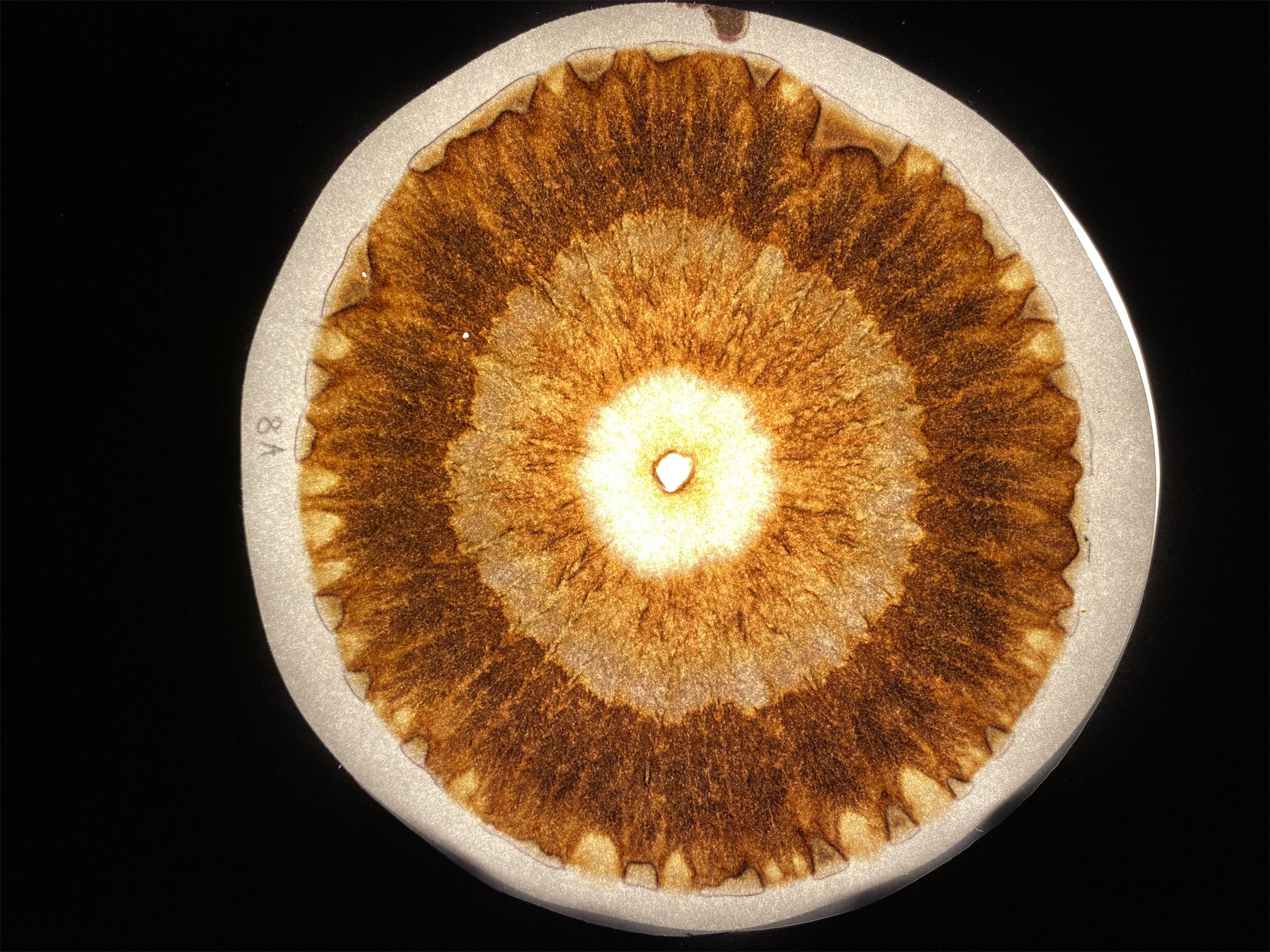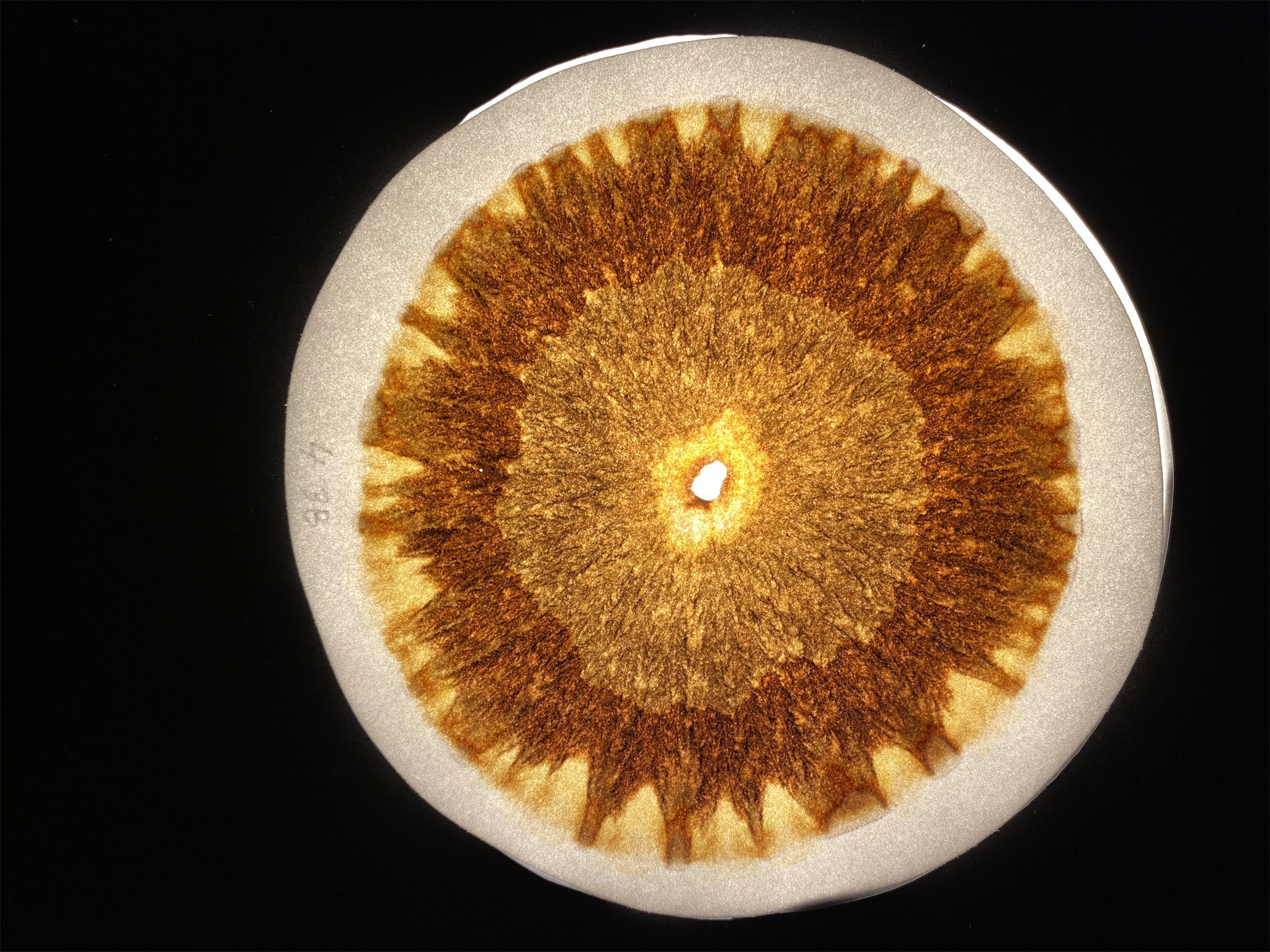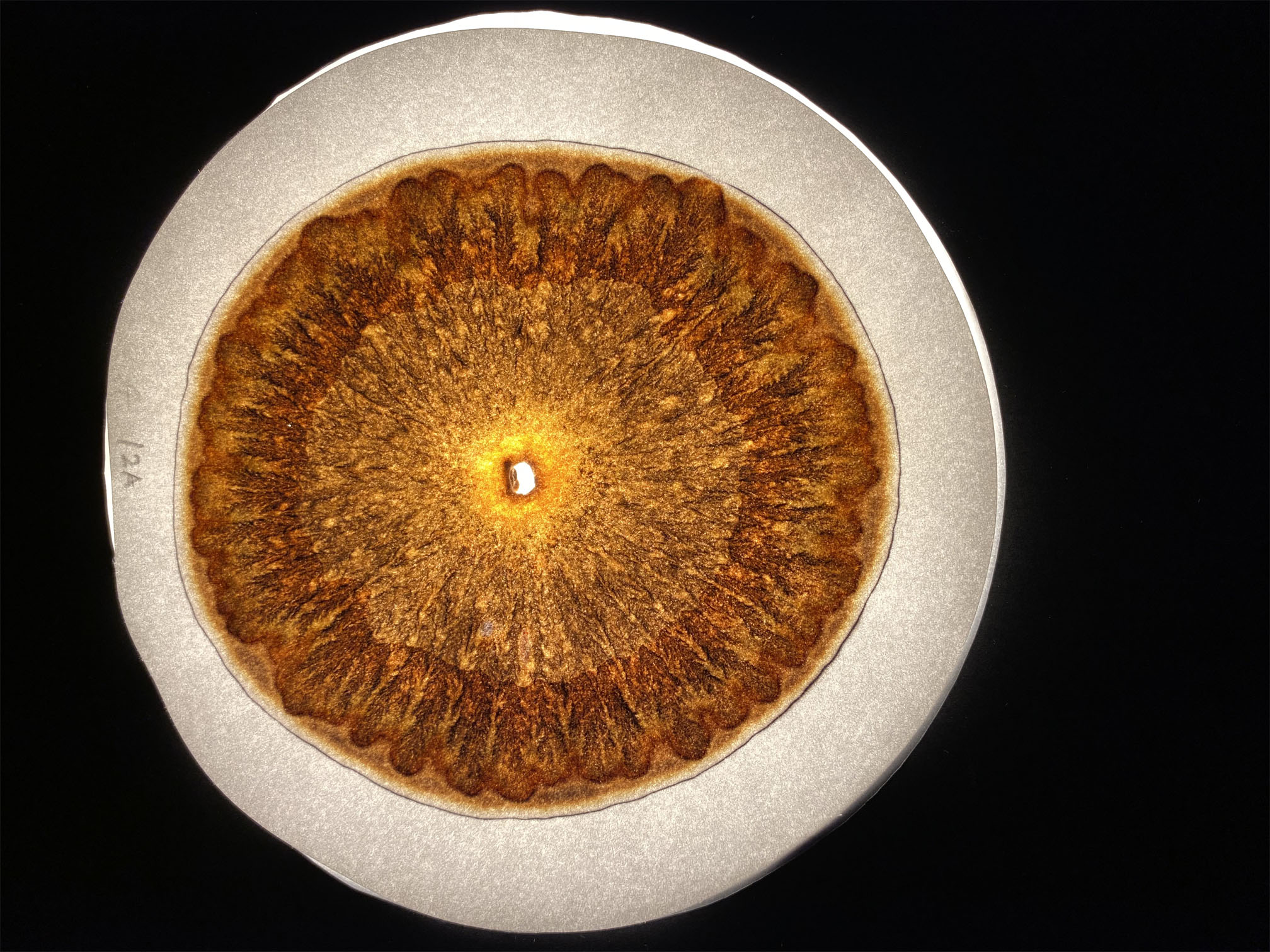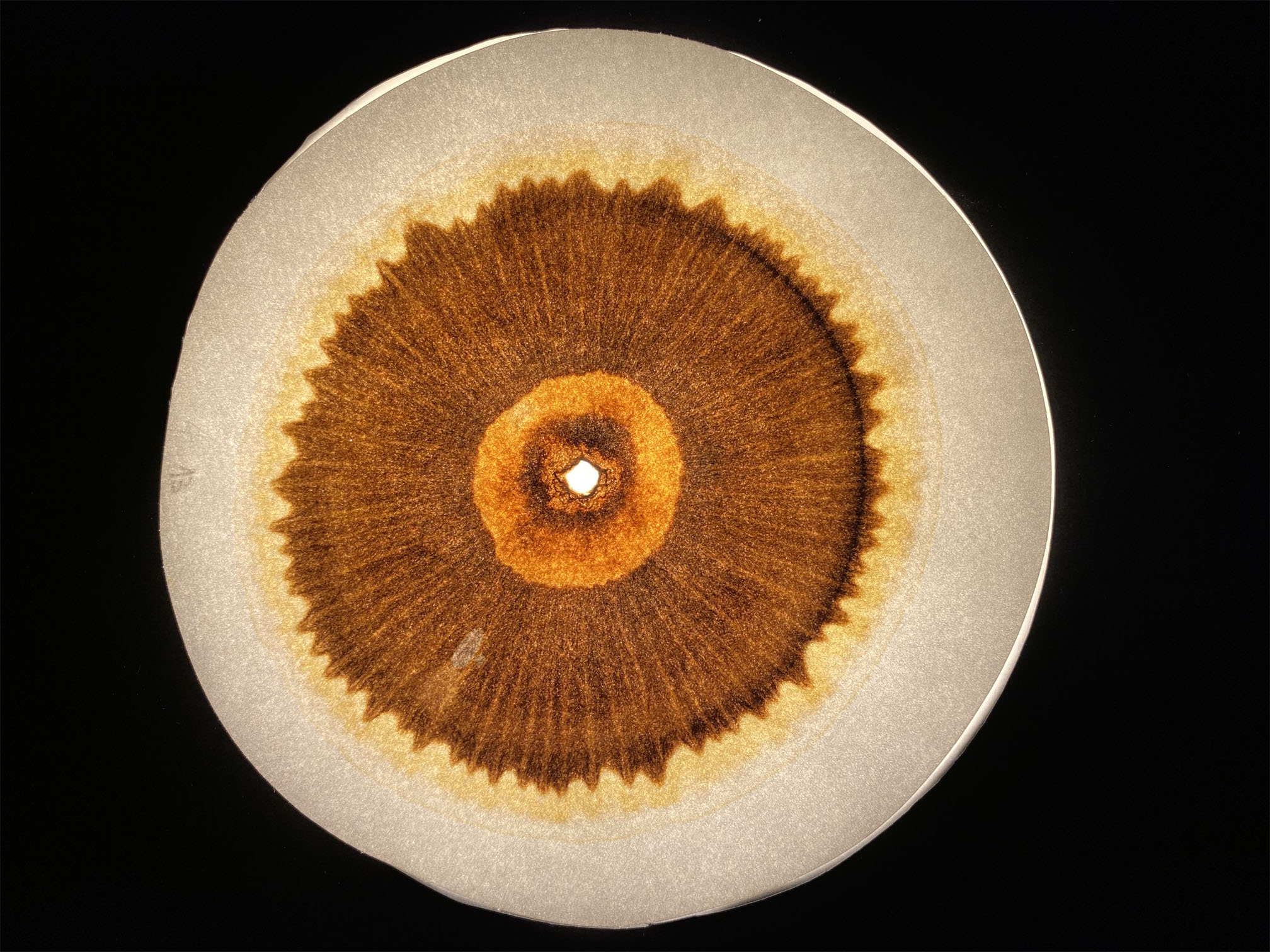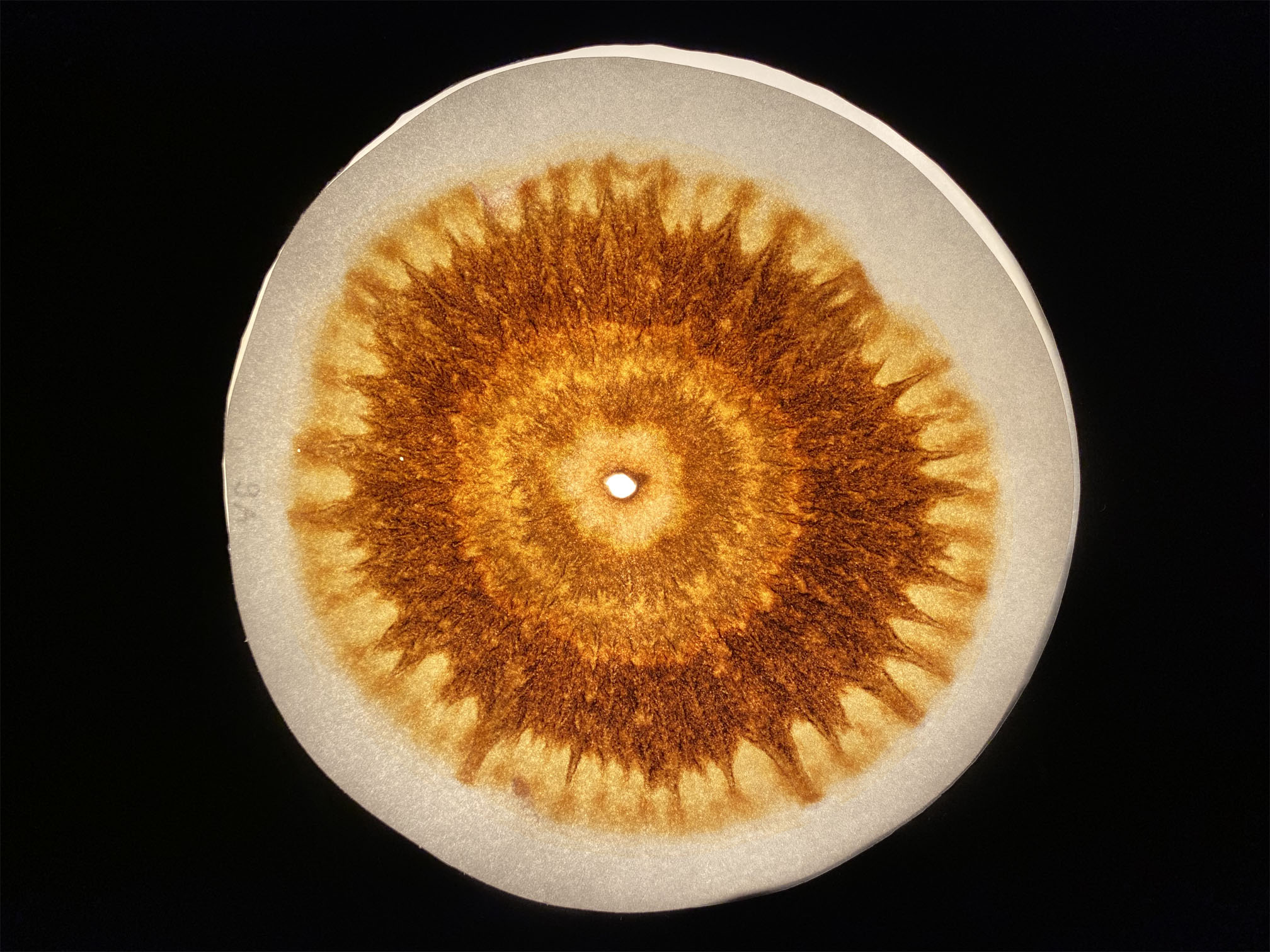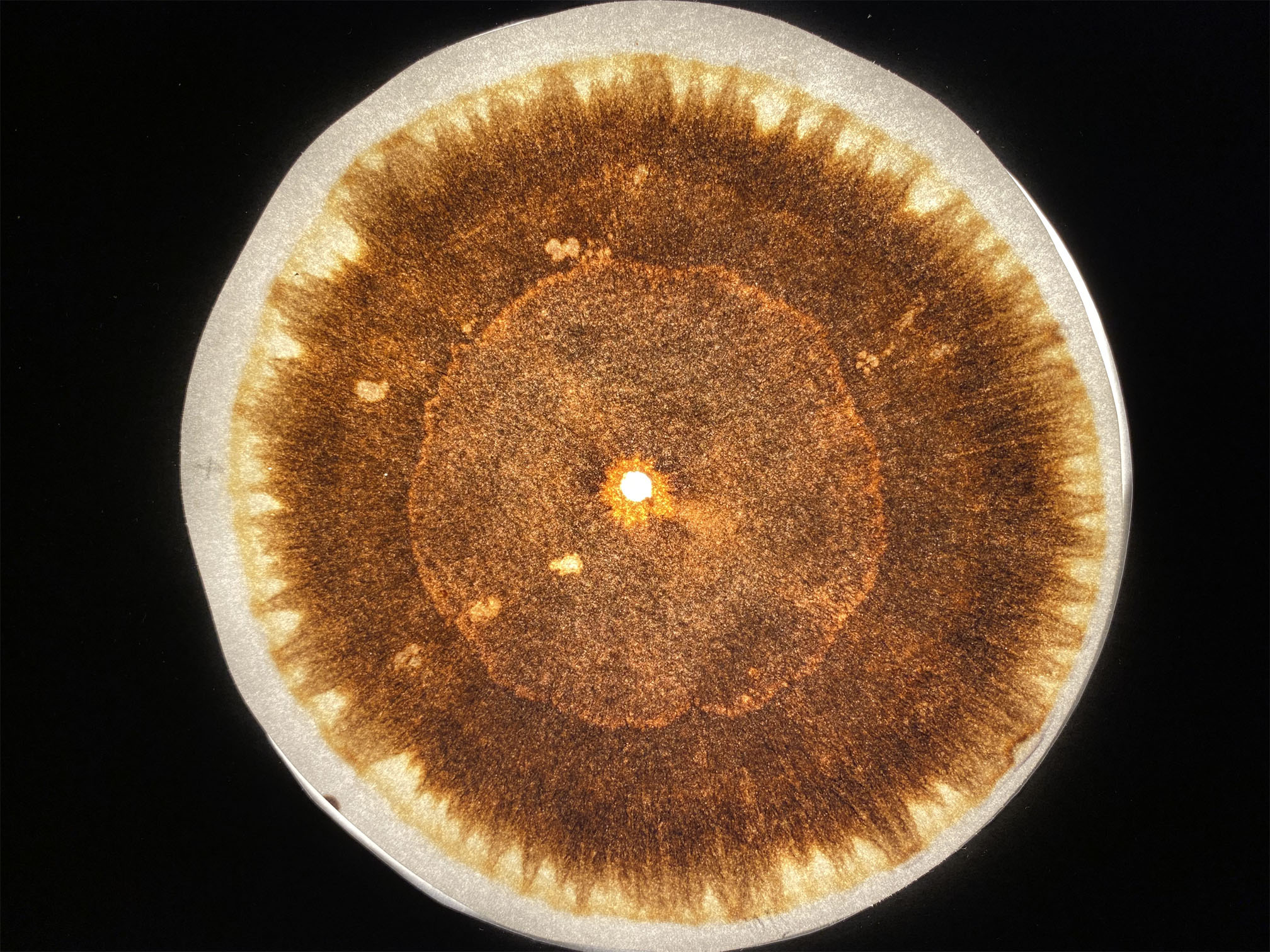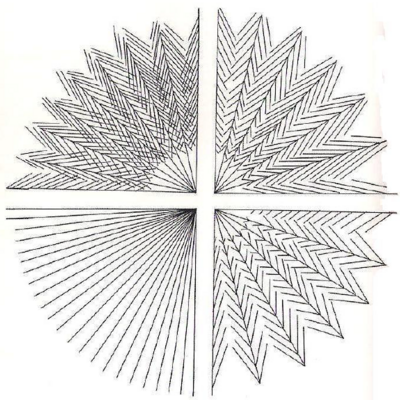
Fieldwork: soil chromatography
The team is experimenting with different soil analysis methods that vary in effort, requirements and accuracy. One method that is particularly appealing is soil chromatography. A team from ETH Zurich learned about this method from local soil scientist Josep de la Maza Benet (Suelo Vivo, Lleida). He organized a workshop during the 2021 seminar week in Senan.
Soil chromatography is a technically accessible and affordable soil analysis technique that reveals soil-life interactions such as the presence of organic matter, bioavailable nutrients and enzyme activity in a visually compelling manner. The method involves taking soil samples, drying them, grinding them, weighing them, and mixing them with sodium hydroxide (NaOH) extractant. After resting for several hours, the soil sample is passed through a round filter paper previously impregnated with the developing substance silver nitrate (AgNO3). The reaction between the compartments of the sample and the developing substance produces a pattern with distinct colors, shapes, and structures such as arrows, zones, and circles. Unlike conventional soil analysis in the laboratory, soil chromatography does not quantify nutrient composition like chemical analysis but provides a visually descriptive overview that can be used to show the interrelations of soil life in any given sample. Non-specialist people who are not normally interested in soils and their maintenance are suddenly fascinated when they see the evocative soil chromatograms. This is also the reason why the method is increasingly used in research, community building and educational projects. The soil chromatography according to Ehrenfried Pfeiffer-Lübke, also known as chroma, is widely used in biodynamic agriculture to check soils or composts easily, quickly and repeatedly for changing indicators of soil health.
References:
Pfeiffer, E. (1984). Chromatography applied to quality testing. SteinerBooks.
Restrepo Rivera, J. & Pinheiro, S. (2011). Cromatografía, imágenes de vida y destrucción del suelo. Ediciones COAS.



